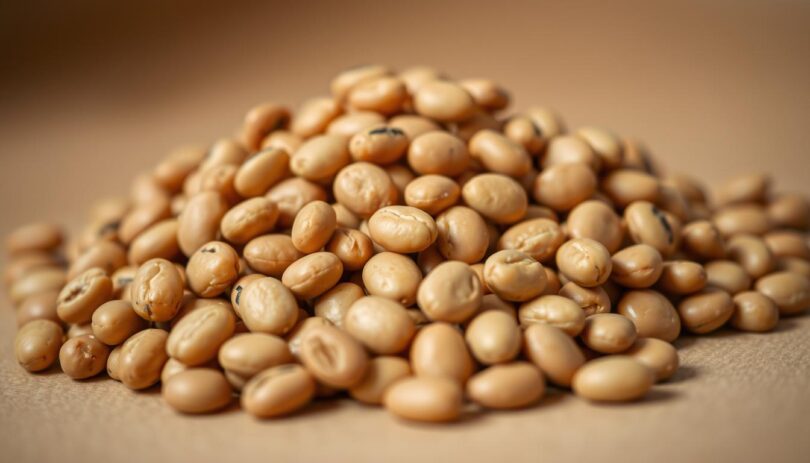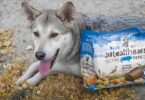Is a popular pantry staple secretly beneficial—or risky—for your four-legged companion? Many pet owners wonder about sharing human foods like pinto beans with their furry family members. Let’s unpack the facts to ensure your pup’s safety while exploring nutritious options.
When prepared correctly, these legumes offer fiber, plant-based protein, and essential vitamins. However, improper seasoning or portion sizes can lead to digestive discomfort. Always serve them plain—never canned or spiced—and consult your veterinarian before introducing new foods.
Moderation remains crucial. Overfeeding may cause gas or bloating, even with healthy ingredients. Start with small portions and monitor your pet’s reaction closely. This guide will walk you through preparation methods, serving suggestions, and expert-backed feeding guidelines.
Understanding your dog’s unique dietary needs ensures their well-being. Stay informed, prioritize balance, and discover how to safely incorporate nutrient-rich foods into their meals.
Understanding Pinto Beans and Canine Nutrition
When evaluating human foods for pets, nutritional value takes center stage. Pinto beans bring a powerhouse of nutrients to the table, making them a candidate for thoughtful inclusion in a balanced dog diet. Let’s explore their composition and how they stack up against other legumes.
The Nutritional Profile of Pinto Beans
These speckled legumes deliver plant-based protein, supporting muscle maintenance and energy levels. A single cup provides nearly 15 grams of protein alongside 15 grams of fiber—key for digestive regularity. Vitamins like B6 and iron also play roles in metabolic health and oxygen transport.
Fiber content deserves special attention. It promotes gut health by feeding beneficial bacteria while aiding waste elimination. This dual action supports both digestion and immune function, crucial for active pets.
How Pinto Beans Compare to Other Beans
Green beans, while lower in calories, lack comparable protein density. Black beans offer similar benefits but have slightly less fiber. Unlike canned varieties, properly prepared pinto beans avoid excess sodium—a common concern in processed options.
For pet owners exploring safe bean options, cooking methods matter. Boiling without seasoning preserves nutrients while eliminating additives. Always prioritize simplicity over flavored alternatives.
Nutritional Benefits of Pinto Beans for Dogs
Packed with essential nutrients, these legumes offer more than just a protein boost for active pets. When added thoughtfully to meals, they provide a mix of compounds that support overall wellness. Let’s break down their key contributions to a balanced diet.
Protein, Fiber, and Essential Vitamins
Plant-based protein helps maintain lean muscle mass and supports tissue repair after exercise. A half-cup serving delivers about 7 grams—valuable for pets with limited meat intake. Combined with fiber, it promotes steady energy release instead of sudden spikes.
Fiber content aids digestion by regulating bowel movements and feeding gut bacteria. This dual action reduces constipation risks while supporting immune function. Vitamins like B6 and iron further enhance metabolic processes and oxygen circulation.
Impact on Energy and Digestion
Nutrients in these beans help convert food into usable energy efficiently. Pets with sensitive stomachs often benefit from the gradual nutrient absorption they provide. Studies show improved stool quality in animals receiving measured portions of cooked legumes.
While chicken remains a primary protein source, adding small amounts of beans diversifies nutrient intake. Always keep portions moderate—they should never replace meat-based proteins entirely. Think of them as a complementary boost rather than a dietary cornerstone.
Can dogs eat pinto beans: Safe Feeding Guidelines
Portion control makes all the difference when introducing new foods. While nutrient-rich options can enhance meals, overdoing it risks digestive upset. Start with tiny quantities—think teaspoon-sized for small breeds or a tablespoon for larger ones—to gauge tolerance.
Identifying Safe Serving Quantities
Experts recommend limiting legumes to 10% of daily calorie intake. For a 30-pound pet, this equals roughly two tablespoons cooked. Use measuring tools for accuracy, and avoid eyeballing amounts. Gradually increase portions over weeks if no issues arise.
Pets with sensitive stomachs benefit from even smaller initial amounts. Split servings across meals to ease digestion. Always pair with familiar proteins to maintain dietary balance.
Monitoring Your Pet’s Reaction
Watch for gas, loose stools, or lethargy within 24-48 hours. These signs suggest discomfort or poor nutrient absorption. Keep a food journal to track reactions—note portion sizes, timing, and symptoms.
Consult your vet before making significant diet changes, especially for pets with kidney issues or allergies. They can recommend personalized amounts based on health history and weight goals.
Remember: Every animal processes foods differently. What works for one might not suit another. Patience and careful observation ensure a safe, positive experience.
How to Prepare Pinto Beans for Your Dog
Proper preparation transforms simple ingredients into safe, nutritious additions to your pet’s meals. Focus on preserving their natural benefits while eliminating potential hazards. Let’s explore kitchen-tested methods to turn this low-fat food into a wholesome option.
Cooking Methods to Retain Nutrients
Start by soaking dried beans overnight to reduce cooking time and improve digestibility. Boil them in fresh water until tender—about 1-2 hours. Avoid pressure cookers, as high heat may degrade sensitive vitamins.
Drain thoroughly and let cool before serving. This process maintains fiber content while making the source protein easier to absorb. Mix small portions with regular meals for gradual introduction.
Steps to Avoid Harmful Ingredients
Never add salt, garlic, or onions during preparation. These additives strain kidneys and can damage red blood cells. Stick to plain water—no oils, butter, or spices.
Rinse canned varieties multiple times to remove excess sodium if using them as a shortcut. However, dried beans cooked at home offer the safest low fat option. Always store leftovers in airtight containers for up to three days.
For a creative treat, mash cooked beans and blend them with pumpkin or lean meat. This way enhances palatability while keeping meals balanced. Remember to make sure all ingredients align with your pet’s dietary needs.
Incorporating Pinto Beans into Your Dog’s Diet
Looking to enhance your pet’s meals? Cooked pinto beans can add nutritional variety when introduced thoughtfully. Start by blending small amounts into their regular food to test acceptance and tolerance.
Mixing Pinto Beans with Regular Meals
Combine a spoonful of mashed beans with kibble or homemade meals. This boosts fiber content while maintaining familiar flavors. For best results, keep bean portions under 10% of their daily intake to avoid disrupting dietary balance.
The plant-based protein acts as a complementary source to meat, supporting muscle health. Fiber aids digestion and feeds beneficial gut bacteria, which strengthens the immune system. Always introduce new ingredients over 3-5 days to monitor reactions.
Creative Serving Ideas and Treat Options
Mix cooked beans with pumpkin puree or unsweetened oatmeal for a texture-rich meal topper. Freeze blended beans with low-sodium broth in ice cube trays for cooling summer snacks.
When giving dog-friendly “treats”, limit bean-based options to 1-2 pieces daily. Pair them with lean proteins like turkey to create balanced snacks. Remember: variety should enhance—not replace—core components of their dog diet.
Precautions and Potential Risks with Pinto Beans
While nutrient-rich foods can enhance pet meals, safety considerations remain paramount. Overdoing legumes may strain sensitive digestive systems, particularly if portions exceed recommended guidelines. Let’s explore how to balance benefits with mindful feeding practices.
Digestive Concerns and Gas
High fiber content supports gut health but may backfire in excess. Compounds like raffinose—a sugar dogs struggle to break down—often cause gas and abdominal discomfort. Both pinto and black beans contain these elements, though cooking methods can reduce their impact.
Sudden dietary changes magnify these effects. Introduce legumes gradually to let the digestive system adapt. Watch for bloating or irregular bowel movements, which signal temporary intolerance.
When to Consult Your Veterinarian
Persistent symptoms like vomiting, diarrhea, or lethargy require professional evaluation. Blood in stool or drastic changes in energy levels could indicate deeper issues. Pets with kidney conditions need extra caution due to mineral content affecting blood chemistry.
Contact your vet immediately if unusual behaviors emerge after feeding legumes. Early intervention prevents minor discomfort from escalating. Share portion details and preparation methods to help pinpoint causes.
Remember: Even safe foods become risky when misused. Moderation and observation protect furry friends while allowing nutritional exploration.
Wrapping Up Your Pinto Bean Journey for a Healthier Dog
Adding nutrient-rich foods to your pet’s bowl requires balance and knowledge. When prepared thoughtfully, cooked legumes offer a great source of plant-based protein and fiber. These elements support digestive health while promoting steady energy levels—key for active companions.
Always prioritize plain, thoroughly rinsed options to avoid additives. Mix small portions into meals or blend them with pet-safe ingredients like unsweetened pumpkin. Tracking reactions helps identify what works best for your furry friend’s unique system.
Moderation remains critical. Overfeeding even beneficial foods can disrupt nutritional balance. Partner with your veterinarian to tailor portions based on weight, age, and activity levels.
By focusing on proper preparation and gradual introduction, you unlock the benefits of these versatile legumes. Informed choices strengthen both the immune system and long-term health, ensuring every meal contributes to a thriving, tail-wagging life.
FAQ
Are legumes like pinto beans safe for pets?
When cooked plainly, these legumes offer a low-fat protein source. Always introduce them gradually to avoid digestive upset, and avoid seasonings or additives that could harm your pet.
How do pinto beans support a pet’s health?
Packed with fiber and plant-based protein, they promote healthy digestion and muscle maintenance. Their iron content also supports blood health, while antioxidants strengthen the immune system.
Can feeding beans cause gas in pets?
Yes, overconsumption may lead to bloating or discomfort due to their high fiber content. Start with small quantities (1-2 tablespoons for medium dogs) and monitor reactions closely.










Leave a Comment